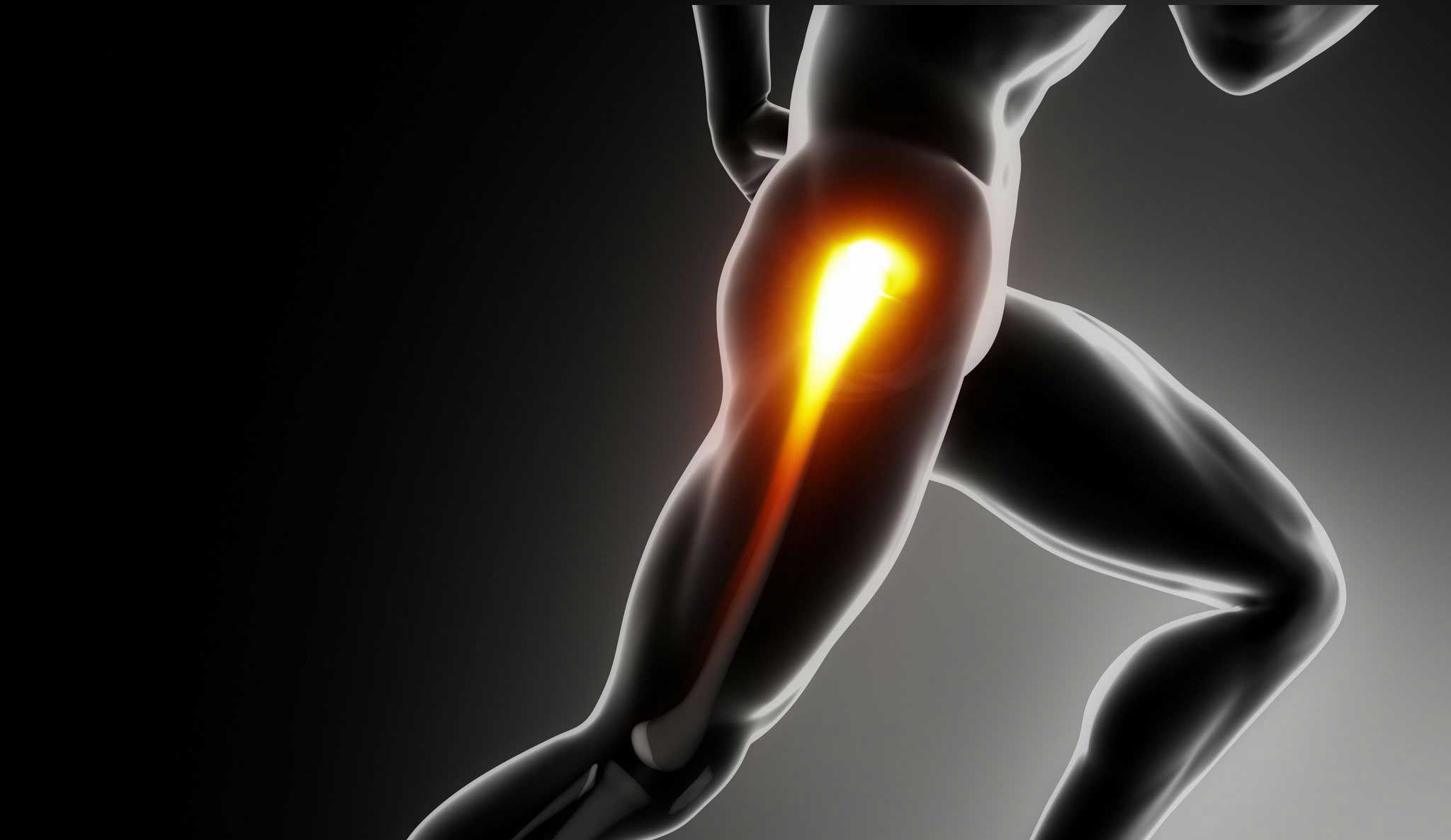
Is that Pain in My Hip Bursitis? Maybe Not.
By Rishi Vora DO and Susan Sorosky MD, updated by William Lian MD
What is the most common cause of outer hip pain? Most people think it’s “bursitis,” but the real answer might surprise you. Bursa are fluid filled sacs that cushion the bones, tendons, and muscles near joints. They are present throughout the body and commonly affect the hips, shoulders, elbows, and knees. Bursitis is a condition in which a bursa gets irritated or inflamed1 This diagnosis is often made when patients present with pain near a bursa, but is that truly the source of pain in most cases?
Historically, outer hip pain was believed to primarily result from inflammation of the bursa, but now it is better understood that bursitis comprises only part of a more complex process.1 The muscles and tendons (cord of collagen tissue attaching muscle to bone) attaching to the greater trochanter (bony protrusion from the femur) such as the gluteus medius, gluteus minimus, piriformis and iliotibial band might actually be the underlying cause of pain. Tendonitis or tendonosis (chronic tendonitis), characterized by inflammation and more so deterioration of collagen, is more likely the proper diagnosis. This was shown in a 2001 study in which patients with clinical symptoms of hip bursitis were evaluated with MRI imaging, with the majority of patients found to have gluteus medius tendon pathology rather than isolated trochanteric bursal inflammation.2 More recently, hip “bursitis” has been renamed Greater Trochanteric Pain Syndrome (GTPS) which acknowledges that it is not just the bursa that is problematic.3
The tendons surrounding the hip provide the attachment for muscles to the greater trochanter and are vital to the joint’s strength and balance. They are important for stability in the frontal plane which is one of the three planes of motion involving side to side movement. In addition, while standing and walking, the gluteus medius contracts to keep the body level and prevent the pelvis from dropping during single leg stance. The tendon of this muscle in particular is often implicated in GTPS, where due to overuse and underlying muscle weakness, gluteus medius tendonitis, tendonosis and partial tears can present. In addition, altered gait from back pain or lower extremity pain, hip arthritis, joint replacement and trauma can also contribute to tendon injury.
What are the symptoms of GTPS? Patients often report pain when lying on the involved side. In addition, it is common to have pain with walking and running and even with prolonged standing.4 How is this condition diagnosed? The providers at DSSP perform a comprehensive musculoskeletal evaluation including an assessment of the strength and stability of these hip muscles with manual muscle testing, gait analysis, and observation during single leg stance and partial squat. A Trendelenburg sign, where the pelvis drops on one side during the above evaluation, indicates weakness of the gluteus medius and also gluteus minimus muscles, and is one of the most sensitive signs of a potential tear in those muscles.2
Finally, how is GTPS treated? The most important component of management is hip and core strengthening. Basic exercises like side lying clam shells or leg lifts with a band are a good place to start. Exercises should then progress to a more functional, upright position like monster walks and even to triplanar resistance band exercises.5 At DSSP, we use the results of each patient’s evaluation to help identify unique biomechanical deficits to address with an individualized therapy program.
If pain and functional limitation persist despite a course of physical therapy and home exercises, Injection-based therapies can also be considered to help manage symptoms of GTPS. Steroid injections in the greater trochanteric region are often helpful in reducing pain, however results may be temporary, and in addition, repeated injection can weaken tendons.6 Current evidence reveals that platelet rich plasma (PRP) is more efficacious and longer lasting than steroids for chronic tendonitis including that associated with “bursitis”.7 This regenerative therapy involves injecting concentrated platelets from a patient’s small blood sample into the damaged tendon. The platelets have an abundance of growth factors which are vital for tissue healing and regeneration. Numerous studies have also shown that PRP is a safe treatment options for most patients, with the most common side effect being transient post-injection soreness.8 Given the many possible avenues for rehabilitation of GTPS and other musculoskeletal diagnoses, let our providers create a comprehensive program to help you with your pain and restore your function.
- https://www.health.harvard.edu/pain/think-that-hip-pain-is-bursitis-think-again
- https://pubmed.ncbi.nlm.nih.gov/11592379/
- https://www.sportsmedtoday.com/greater-trochanteric-pain-syndrome-va-150.htm
- https://now.aapmr.org/sports-medicine-disorders-of-the-hip-posterolateral/
- http://maxfitnessftw.com/exercise-2/six-exercises-target-gluteus-medius/
- https://www.ncbi.nlm.nih.gov/pmc/articles/PMC2505250/
- https://www.sciencedaily.com/releases/2014/03/140314093747.htm
- https://www.ncbi.nlm.nih.gov/pmc/articles/PMC5105294/
